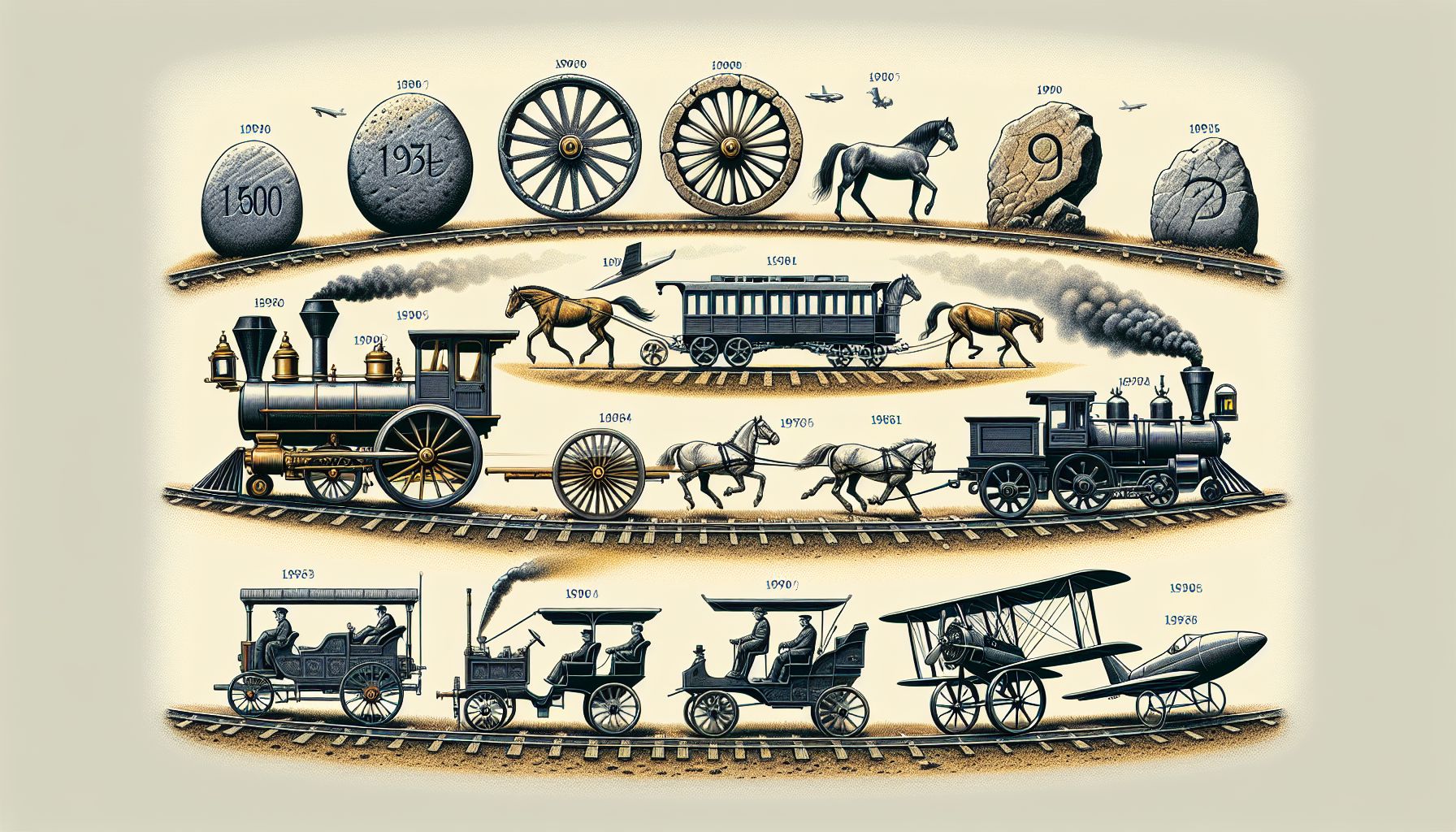📌 Let’s explore the topic in depth and see what insights we can uncover.
⚡ “Imagine our world without cars, trains, or airplanes - sounds like a hassle, right? Brace yourself for a journey back in time, as we explore epic inventions that revolutionized transportation, making your daily commute possible!”
Welcome aboard the time-traveling vehicle of progress! We’re about to take a journey through history, exploring the pivotal inventions that have revolutionized transportation. Fasten your seatbelts as we venture from the simple wheel’s humble beginnings to the mind-boggling technology of autonomous vehicles. 🚗 We’re all familiar with the feeling of watching the world zoom by from the window of a moving car, train, or airplane. But have you ever stopped to ponder the incredible technology that makes these everyday experiences possible? Each mode of transportation we rely on today is a testament to human ingenuity and our ceaseless pursuit of progress. Let’s delve into the remarkable inventions that have propelled us forward, changing the face of transportation forever.
🎡 The Wheel: A Revolution in Motion

"Revolutionary Inventions Fueling the Journey of Progress"
Around 3500 B.C., our ancestors in Mesopotamia stumbled upon an invention that would quite literally set the world in motion: the wheel. Initially used in pottery making, the wheel soon found its place in transportation when it was combined with an axle to create a basic cart. This simple yet brilliant invention paved the way for countless advancements, from horse-drawn chariots to today’s tire-clad cars. While the wheel might seem like a straightforward invention, it represents a significant leap in human innovation. The creation of the wheel symbolizes our ability to conceptualize abstract ideas—like circular motion—and turn them into tangible, practical tools. So, the next time your car smoothly rounds a corner, take a moment to appreciate the humble wheel that started it all.
🚂 Steam Engine: Full Steam Ahead to the Industrial Revolution
Fast forward to the 18th century, and we encounter another transformative invention: the steam engine. British inventor Thomas Newcomen first developed the atmospheric steam engine in 1712 for pumping water out of mines. But it was James Watt who improved and adapted it for transportation, birthing the steam locomotives that powered the Industrial Revolution. The steam engine was a game-changer. It allowed for transportation of heavy goods over long distances, catalyzing the growth of industries and economies. Imagine the sight of the first steam-powered locomotive chugging down the tracks, belching out clouds of steam as it hauled a heavy load. This was a symbol of progress, a testament to the power of human ingenuity.
🚘 Internal Combustion Engine: Fueling the Automobile Age
In the late 19th century, another invention roared to life, forever altering the landscape of transportation: the internal combustion engine. Developed by engineers like Nikolaus Otto and Gottlieb Daimler, this engine ignited a mixture of fuel and air inside a cylinder, creating a powerful explosion that drove a piston. The result? An incredibly efficient engine that could power a vehicle. The internal combustion engine was the heart of the automobile revolution. It facilitated the creation of the modern car, transforming transportation on a global scale. Imagine the thunderous applause that must have filled the air when Karl Benz’s three-wheeled Motorwagen—powered by an internal combustion engine—made its debut in 1886.
✈️ The Airplane: Soaring Above the Clouds
As we rolled into the 20th century, two brothers from Ohio dared to dream the impossible. Orville and Wilbur Wright, better known as the Wright brothers, took the world by storm when they successfully flew the first powered airplane in 1903. This feat of engineering allowed humans to conquer the skies, ushering in a new era of transportation. The Wright Brothers’ invention was no mere bird imitation. They combined principles of aerodynamics, control systems, and engine design to create a machine that could fly. The age of air travel had begun, shrinking our world and making distant lands accessible like never before.
🤖 Autonomous Vehicles: Driving into the Future
In the 21st century, we are witnessing yet another transportation revolution: autonomous vehicles. These self-driving cars, equipped with advanced sensors and artificial intelligence (AI), promise to redefine mobility. From Google’s Waymo to Tesla’s Autopilot, autonomous vehicles are testing on public roads, hinting at a future where manual driving may become obsolete. Autonomous vehicles are not just about technology; they represent a shift in how we perceive transportation. They promise increased safety, efficiency, and accessibility, potentially transforming our cities and societies. The wheels of progress continue to turn, driven by our relentless desire to innovate.
🧭 Conclusion
From the ancient wheel to autonomous vehicles, every invention in transportation marks a milestone in our quest for progress. These inventions have not just reshaped our landscapes—they’ve transformed our societies, economies, and lives. They’ve shrunk the world, bringing distant places within our reach and knitting humanity closer together. As we stand on the brink of a new era—envisioning hyperloops, flying cars, and space travel—it’s breathtaking to recall the journey we’ve taken so far. The history of transportation is a testament to human ingenuity, a chronicle of our relentless drive to push boundaries and redefine the possible. So, as we cruise into the future, let’s remember to appreciate the wheels of progress that keep turning, taking us further and faster than ever before. 🚀
🌐 Thanks for reading — more tech trends coming soon!
